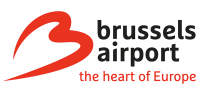Synchronized stakeholder decision on process optimization at airport level
Timeline













Description
The main objective of the Implementation Project is to close the gap on Initial Airport Operations Plan (iAOP) in 12 airports and 2 Air Navigation Service Providers. AOP project implementation will be harmonised with the implementation of other projects such as DMAN (Departure Manager), Electronic Flight Strips (EFS) and Basic A-CDM (Airport Collaborative Decision Making).
The iAOP is a single, common and collaboratively agreed rolling plan available to all airport stakeholders whose purpose is to provide common situational awareness and to form the basis upon which stakeholder decisions relating to process optimisation can be made. It reflects the operational status of the airport and therefore facilitates demand and capacity balancing. It connects the relevant stakeholders, notably the
airspace users’ flight operations centre. It contains data and information relating to the different status of planning phases and is in format of a rolling plan, which evolves over time.
The iAOP information will be shared with the local stakeholders and ready for the AOP - NOP (Network Operations Plan) Connection (Family 4.2.4) to ensure the positive impact on the network level. By introducing the Demand Capacity Functionality and On-Time Key Performance Indicator the A-CDM (Airport Collaborative Decision Making) performance assessment and reporting process will be improved/implemented. Before starting the AOP NOP integration a certain level of understanding and implementation of AF2 iAOP must be accumulated.
Specific objectives:
The Implementation Project specifically aims to:
Implement an Initial AOP at 12 airports and 2 ANSP’s to enhance common situational awareness and efficiency of operations, connected with the Network Operation Plan (NOP, Family 4.2.4.).
Develop new KPIs (Key Performance Indicators) to measure both planned and executed operations.
Define the type, quality and quantity of the NOP / AOP data exchange with the relevant stakeholders (ANSP/Airspace Users).
In particular, for each airport this IP covers the following specific objectives:
Brussels airport: the specific aim is to have proactive, collaborative and efficient performance management by every operational stakeholder at the airport. By providing real time information from and to all stakeholders and enable direct communication. Both planned and executed operations are monitored, to identify where action needs to be taken by the Airport Operations Centre. It includes a hub control tool
for the home carrier to improve efficiency that will support: real time transparency of the hub operation, predict operational bottlenecks before they occur, visualize the critical path, monitor the handling status of each flight, decision support for disruption handling, increase TOBT accuracy, adherence to A-CDM. The AOP will take into account both landside (including accessibility) and airside processes and as such will
transversally coordinate pax, bag and aircraft processes. This project is the continuation of project 2015_244_AF2 (Action 2015-EU-TM-0193-M), related to the APOC of Brussels Airport. It is in cooperation with local ANSP Belgocontrol.
This project will use the data from the project 2015_245_AF2 “Airstat” (Action 2015-EU-TM-0196-M), which will be used as tool to optimise and enhance the local iAOP.Copenhagen Kastrup Airport: The specific aim of the project is to close the gaps identified under ‘initial AOP'. The main gaps are software and system related concerning API, flight status codes, RWY configuration plan, airport capacity and events, flight schedule and flight linking information. For the following tracks: Arrival Planning Information (API), RWY configuration plan, airport capacity and events, Copenhagen airport will use a software already delivered under project 2015_044_AF2 Initial DMAN & AOP and develop it further into the needs of AOP.
Dublin Airport: As a follow on to A-CDM, the aim of this project is to provide Dublin Airport with a rolling Airport Operational Plan to be made available to airport stakeholders to better manage the airport and enhance the passenger experience. It will combine landside and airside processes together and present a plan in the relevant format with agreed KPIs to assist in the decision making within the airport. Initially it will be necessary to conduct a gap analysis on the available data and it will be necessary to procure the tools, systems and resources to bridge any gaps in the data so the relevant information can be made available. It will also involve the integration of a number of new data sources such as Meteorological and Air Traffic Control (ATC) data using System Wide Information Management (SWIM) methods. It will provide alerts to the stakeholders and also highlight constraints/factors which can impact on time performance.
Frankfurt International airport: the specific aim is to implement part of the iAOP project at Frankfurt Airport. This covers the IT-realisation of the elaborated iAOP@FRA concept, including the establishment of B2B (Business to Business) and B2C (Business to Client) interfaces to all relevant stakeholder, the creation of the extended DPI (Departure Planning Information) and basic API (Arrival Planning Information) information as well as data processing in our local AODB.
IP 2015_225_AF2 "Initial Airport Operations Plan @ FRA" (Action 2015-EU-TM-0196-M) covered the concept and the specification for AOP as well as some preliminary interface work while IP 2017_022 project will cover the full technical implementation of the initial AOP.Manchester Ringway airport: the specific aim for Manchester Ringway airport (MAN) is to deliver an information sharing platform presenting a single collaboratively agreed rolling plan and key airport operational status which is available to all airport’s stakeholders. The plan is updated with flight trajectory, airport resource & local weather data to provide common situational awareness, KPI performance and alerts on plan variance to form the basis upon which stakeholder decisions relating to process optimisation and optimal airport performance can be collaboratively made.
Milan Malpensa airport: the specific aim is to evolve iAOP introducing three different additions to the current technical set of sensors and interfaces that are feeding AODB (Airport Operational Database) and ACDM platform (available to all stakeholders) plus the introduction of a TBT (Ground-to-Air) radio frequency dedicated to Airport Operations and ACDM.
The three additions are: installation of 36 new VDGS (Visual Docking Guidance System )/displays for the contact stands, the implementation of automatic real Block-on - Block-off using sensors and the development and introduction of a dedicated Flight Operations Application. The change of the existing VDGS/Displays with new and enhanced models and the installation of sensors on the non-contact stands is driven by 2 main needs: consolidate the Pre-departure Sequence and enhance predictability of TOBT (Target off block time) and TTOT (Target take-off time) in order to provide it to the Network Manager Operation Center (NMOC) through the DPI (Departure Planning Information) messages. New VDGS/Displays at contact stands will allow also to display key A-CDM information, such as TSAT (Target start-up approval time), to all stakeholders located at the Gate: Airlines crews, Ground handler and Airport operators. This will contribute to the enhancement of the information sharing level and, consequently, improve the accuracy level of the AODB/A-CDM in view of feeding the AOP. The development of a flight Operations APP is a key to facilitate cooperation among stakeholders while raising the quality of data and of information dissemination contributing significantly to the quality improvement of "Departure Progress Information" to NMOC in view of AOP-NOP integration. The ground to air frequency will allow a direct contact
between Airport Operations Center and pilots thus facilitation information exchange and situation awareness.Munich Franz Jozef Strauss airport: the specific aim is to implement and deploy a local airport rolling plan through process optimisation as well as data acquisition and fusion with all relevant stakeholders. Data will be used for monitoring, ex-post evaluation and KPI management. Coordinated approach of stakeholders and better data quality enhances the common situational awareness and the efficiency of the network.
The activities in project 2015_282_AF2 ("Initial AOP", Action 2015-EU-TM-0193-M) form the basis for initial AOP and initial APOC. IP 2015_282_AF2 focused on the relocation of working positions, improved and simplified communication and coordination structures within a limited number of airport internal stakeholders. The results obtained through the previous project will feed into the current IP, which aims to
extend the scope to involve ANSP, airlines and weather service provider. The main tasks will comprise process optimisations and new operational methods in the remits of family 2.1.4.Nice Cote d’Azur airport: The specific aim of this project is to consolidate the necessary set of information to Aéroport de Cote d'Azur (ACA), provide a common situational awareness to all stakeholders hence improving the process of a coordinated decision making and optimising the management of airport airside and landside resources and operations. It will also help to better manage the airport performance. This project is complementary to the projects 2015-085-AF2(Action 2015-EU-TM-0193-M, "DMAN and Pre-departure sequence (PDS) implementations for the CDM implementation") and 2015-083-AF2 (Action 2015-EU-TM-0196-M,"iAOP implementation"). With this project, Family 2.1.4 iAOP will be fully implemented.: Project 2015_083_AF2 aims at renewing the AODB and Resources Management System (RMS) to have an integrated solution which will be more efficient and which will improve operations management. This integrated solution is the first step towards AOP.
IP 2017_022_AF2 “Synchronised stakeholder decision on process optimisation at airport level” is the second step towards AOP. It aims at completing the set of data to be integrated in the AOP which will improve information sharing with the local and European stakeholders, the common situational awareness and the performance management.Rome airport: the specific aim is to collect information and performance stemming from the A-CDM operations, in order to monitor and assess, through dedicated KPIs and alerts, the airport operations, allowing a smooth and efficient airport planning. Moreover the project will connect operational systems, including stakeholders', and will consolidate existing data and KPIs in order to seamlessly gather
information which will be conveyed to the new AirPort Operations Centre (APOC). Furthermore, the AirPort Operations Centre will be equipped with up-to-date technology, aiming at guaranteeing the business continuity, so as including software and hardware facilities dedicated to this purpose, in order to support the airport operativity even in case of technical failures or emergency.Stansted airport: the specific aim for Stansted Airport (STAL) is to deliver an information sharing platform presenting a single collaboratively agreed rolling plan and key airport operational status which is available to all airport’s stakeholders. The plan is updated with flight trajectory, airport resource & local weather data to provide common situational awareness, KPI performance and alerts on plan variance to form the basis upon which stakeholder decisions relating to process optimisation and optimal airport performance can be collaboratively made.
Stockholm Arlanda airport: The specific aim is to establish automated data entry processes of stakeholders input to optimise information sharing capabilities. Moreover the aim is to introduce automation of data entries of crucial information not taken into account in ongoing projects such as runway capacity, limited by current environmental conditions at every given moment and information from the business system on runway and taxiway maintenance work distribution .
Planning of airport throughput, e.g. RWY and TWY (Taxi way) capacity and limitations in regards of RWY configuration will be supported by a higher level of automation.
The interdependencies with 2015_292_AF2 (DMAN – Departure Management), 2015_290_AF2 (IAOP) and 2015_294_AF2 “OTP implementation” will be taken into account to prohibit overlaps between the projects.
Most of the data entries today rely primarily on manual entry of data while complete AOP implementation will be performed by using automated data input to a large extent. The 2017 project will fill gaps (RWY configuration, occupancy time, data related to current environmental condition etc. ) detected during the IAOP project phase.Paris CDG & ORY: This project addresses two major goals: the first Consolidation of AOP database by Baggage flows’ information and the second goal being deployment of the Airport Perfomance Assessment and Management Support (APAMS) & Simulation tools. The purpose of the Consolidation of the AOP database is to consolidate the departure process by providing accurate and reliable information related to baggage process. Paris Airport will use some of the deliverables from Project 2015_135_AF2 in order to implement this project track.
As for the second goal – APAMS & Simulation tools, it is planned that these tool will support the stakeholders to manage and optimise their operations. Similar to the first goal, Paris Airport will use some of the deliverables from project 2015_133_AF2 in order to accomplish this project track.
Expected Results:
By completing the project it is expected that all airports will have:
. Optimised airport operations which result in better planning, better information sharing and thus ensure a better impact on the network.
. Enhanced operational decisions which results in optimised departure surface and arrival management. Implementation of information sharing in order to optimise airport resources data, flight trajectory data and local weather data.
As a result of the project completion it is expected that airports will cover close to 100% of the gap identified under family 2.1.4. – Initial Airport Operational Plan (AOP)
Gap coverage:
Paris CDG & ORY: 90%
Stockholm Arlanda airport: 87%
Brussels Airport: 90%
Copenhagen Kastrup airport: 100%
Dublin airport: 70%
Fiumicino: 100%
Frankfurt International airport: 100%
Manchester Ringway airport: 85%
Munich Franz Jozef Strauss airport: 100%
Nice Cote d’Azur airport: 100%
Milan Malpensa airport: 35%
Stansted airport: 85%
ENAV: 75%
The airports are expected to implement the following functionalities at 100%:
Flight trajectory data: Information sharing related to Flight Progress Information Elements of an Inbound/Outbound/airport transit Trajectory to/from/at Airport.
Airport Resources data: Airside and landside resources such as runway capacity &configuration, or parking stands.
*Local weather data: Information sharing related to MET Information Elements of airport.
Performance Benefits:
The implementation of the Initial AOP contributes to a more efficient operation at the participating airports.
The AOP will enhance the local processes in order to ensure the best possible usage of the available capacity and resources and create a positive impact to the network by making available the most actual and reliable data for the network planning process.
The capacity will be improved through optimal use of facilities and services, better use of airport and Air Traffic Flow Management (ATFM) slots.
The IP will bring benefits in terms of optimised airport operations and enhanced operational decisions through integrated systems. In particular, the coordinated approach will ensure the following aspects:
Enhanced level of synchronisation
Sharing of the best practises among of the participants
Reduced fragmentation
Enhance cross-border connections, international (8 EU Countries), national and regional traffic
Expected Improvements (Annual Benefits):
AOP will improve stability of operations by working pro-actively on predicting future bottlenecks and allowing to take mitigating measures in advance.
AOP will also improve the predictability of operations by linking all airport processes (landside and airside) and assessing the impact of issues in one process on the other processes.
AOP will improve accuracy of timestamps within the airport both internally within the airport’s community but also towards the network.
The following timestamp improvements are expected:
Additional time in Arrival Sequencing and Metering Area (ASMA) 0.1%
Airport ATFM Delay 0.3%
Additional time in taxi in 0.1%
Additional time in taxi out 3.0%
ATC Delay 0.3%
Operational Cancellation 18.4%
All of the above will ensure that AOP will achieve better demand-capacity balancing. In times of winter operations AOP will achieve:
Better insights and predictability of remote de-icing operations, ensuring optimal usage of scarce capacity, reducing queues and thus fuel burnt, reducing amount of glycol used, eliminating the risk for -expiration of hold-over time
Better coordination of snow and ice clearing, reducing time spent in holding, queues in front of the runway
Additional Information
- Project Type: Airport
- CEF Call Year: 2017
- Civil/Military: Civil
- Multistakeholder: Yes
- Main AF: AF2 - Airport Integration and Throughput
- Sub AF: S-AF 2.1 Departure Management Synchronised with Pre-departure sequencing
- Progress Percentage: 90%
